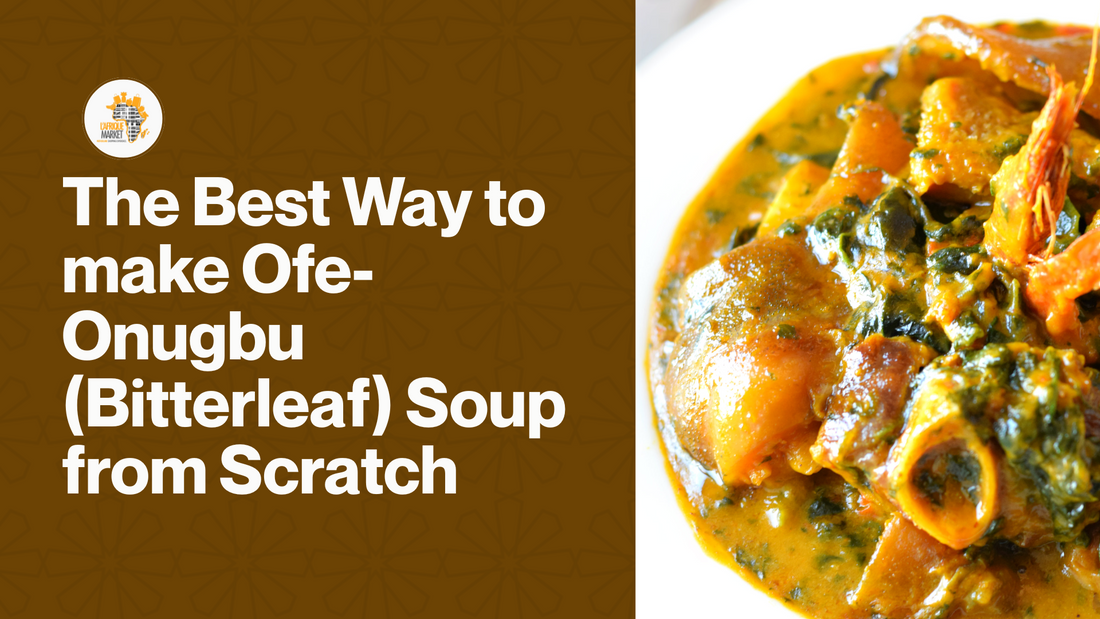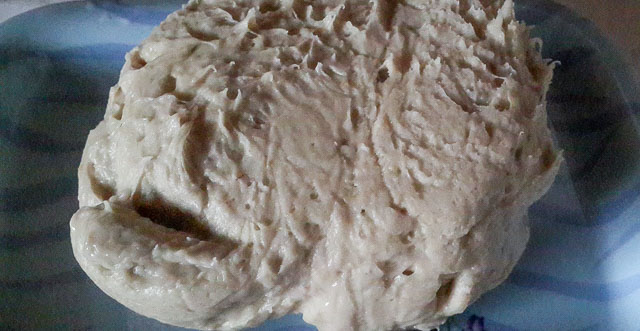
The Best Way to make Ofe-Onugbu (Bitterleaf) Soup from Scratch
Share
If there is one soup that speaks volumes about Nigeria's rich culinary heritage, it has to be the legendary Bitterleaf Soup, also known as Ofe Onugbu. This soup is a flavorful, hearty delight that combines bitter leaves with a medley of meats, spices, and thickening ingredients to create a dish that warms both the belly and the soul.
This blog will guide you through every step, helping you to make the best Bitterleaf Soup from scratch. It’s also packed with tips, ingredient variations, and answers to all the questions you might have! Ready? Let’s get to cooking!
Also read: Top 10 African Grocery Stores Near Me in Chicago
What You’ll Need: Bitterleaf Soup Ingredients from Lafriquemarket
Here’s a comprehensive list of ingredients to gather — many of which you can conveniently shop on Lafriquemarket.com:
- Bitter leaves (fresh or washed, dried bitter leaves) – about 3 cups, properly washed and squeezed to reduce bitterness
- Assorted meats: cow head meat, beef, tripe (shaki), or any preferred cuts (2 kg total)
- Stockfish (dried fish) – cleaned and soaked
- Dry fish – cleaned and washed
- Ponmo (cow skin) – optional but adds great texture
- Palm oil – about 300 ml for that rich color and flavor
- Ground crayfish – ½ cup for depth of taste
- Ogiri (fermented castor seed condiment) – 1 tbsp (optional but authentic)
- Seasoning cubes (Maggi or Knorr) – 3 cubes
- Salt and pepper to taste
- Onions – half a cup, sliced
- Cocoyam (for thickening) – peeled, boiled, and pounded, or you can use cocoyam flour if preferred
- Ofor (alternative thickener) – ½ cup ground (optional, if you want a thicker soup)
- Scotch bonnet or habanero peppers – blended or chopped for heat (optional)
Step-by-Step Guide to Make Bitterleaf Soup
Step 1: Prepare and Soften the Bitter Leaves
Bitter leaves are the soul of the soup and require proper washing to mellow their bitterness. If you’ve purchased fresh leaves, wash and squeeze the leaves multiple times with clean water until the bitterness reduces to your liking. For dried bitter leaves, soak thoroughly in warm water, then rinse several times.
Some people add a teaspoon of edible potash to hasten softening, but this can alter the taste and color, so it's best to avoid it or use sparingly.

Image from: The Pretend Chef
Step 2: Cook the Meat and Stockfish
Season your assorted meats with salt, sliced onions, and 2 seasoning cubes. Put them into a pot with water and boil until tender. This usually takes about 45 minutes to 1 hour depending on the cuts.
Add your stockfish and dry fish about halfway through cooking to soften them as well. Ensure all meats are tender and flavorful.
 Image from: Sisi Jemimah
Image from: Sisi Jemimah
Step 3: Add Palm Oil and Flavorings
Once the meat is tender, add in the palm oil and stir well. This is when the rich color and flavor start to build. Add ground crayfish, pepper, 1-2 seasoning cubes, salt, and iru if using. Stir and let everything come together for about 10 minutes.

Image from: Sisi Jemimah
Step 4: Thicken the Soup
Add the pounded cocoyam (or cocoyam flour) to the pot and stir continuously. The cocoyam will dissolve and thicken the soup giving it that luxurious texture. If the soup is not thick enough to your liking, add ground ofor slowly until you reach that perfect consistency.

Image from: The Pretend Chef
Step 5: Final Touch – Add the Bitter Leaves
Now, add the properly washed bitter leaves to the pot. Stir gently, taste for salt and seasoning, then let it simmer for another 3-5 minutes. Avoid cooking the leaves for too long to keep their texture lively and fresh.

Image from: Sisi Jemimah
Some Variations and Tips to Spice up your Bitterleaf Soup
Some variations like to add ground egusi (melon seeds) along with the cocoyam for a richer texture. If you want to use egusi, add it before the bitter leaves.
Others have a preference for Ogiri (castor seed fermented condiment) which is more common in some regions, while Iru (locust beans) is used in others. Both add flavor but you can choose your favorite.
You can also decide on your meat choice: goat meat, chicken, or even fish, depending on your preference and availability. Cow head meat and tripe remain traditional favorites.
You can adjust the pepper quantity to your spice tolerance, and Ofe-Onugbu soup pairs beautifully with any swallow — eba, pounded yam, semovita, or fufu.
Some Common Questions About Bitterleaf Soup
Q: Why do I need to wash bitter leaves multiple times?
A: Bitter leaves naturally have a strong, bitter taste. Washing them thoroughly reduces this bitterness without stripping away the essential flavor.
Q: Can I use frozen or dried bitterleaf?
A: Yes! Frozen bitter leaves are convenient and retain flavor. Dried bitter leaves must be soaked well to rehydrate and soften.
Q: What if I can’t find cocoyam?
A: Cocoyam is the traditional thickener, but you can substitute with achi or ofor powders bought from African groceries, or use cocoyam flour.
Q: Is ogiri necessary in the recipe?
A: Ogiri adds a distinct flavor, but the soup can be delicious without it. Substitute with iru or skip it if unavailable.
Q: How long can I keep leftover soup?
A: Refrigerate leftovers in an airtight container for 2-3 days. Reheat thoroughly before consuming.
Final Thoughts
Bitterleaf Soup is a celebration of textures and flavors from the heart of Nigeria. With fresh bitter leaves, your favorite assorted meats, thickening from cocoyam, and that signature palm oil taste, you have a soul-satisfying meal that’s truly unforgettable.
Make your ingredient shopping easy by ordering fresh, authentic African staples from Lafriquemarket.com. Happy cooking and enjoy that tasty Ofe Onugbu!
